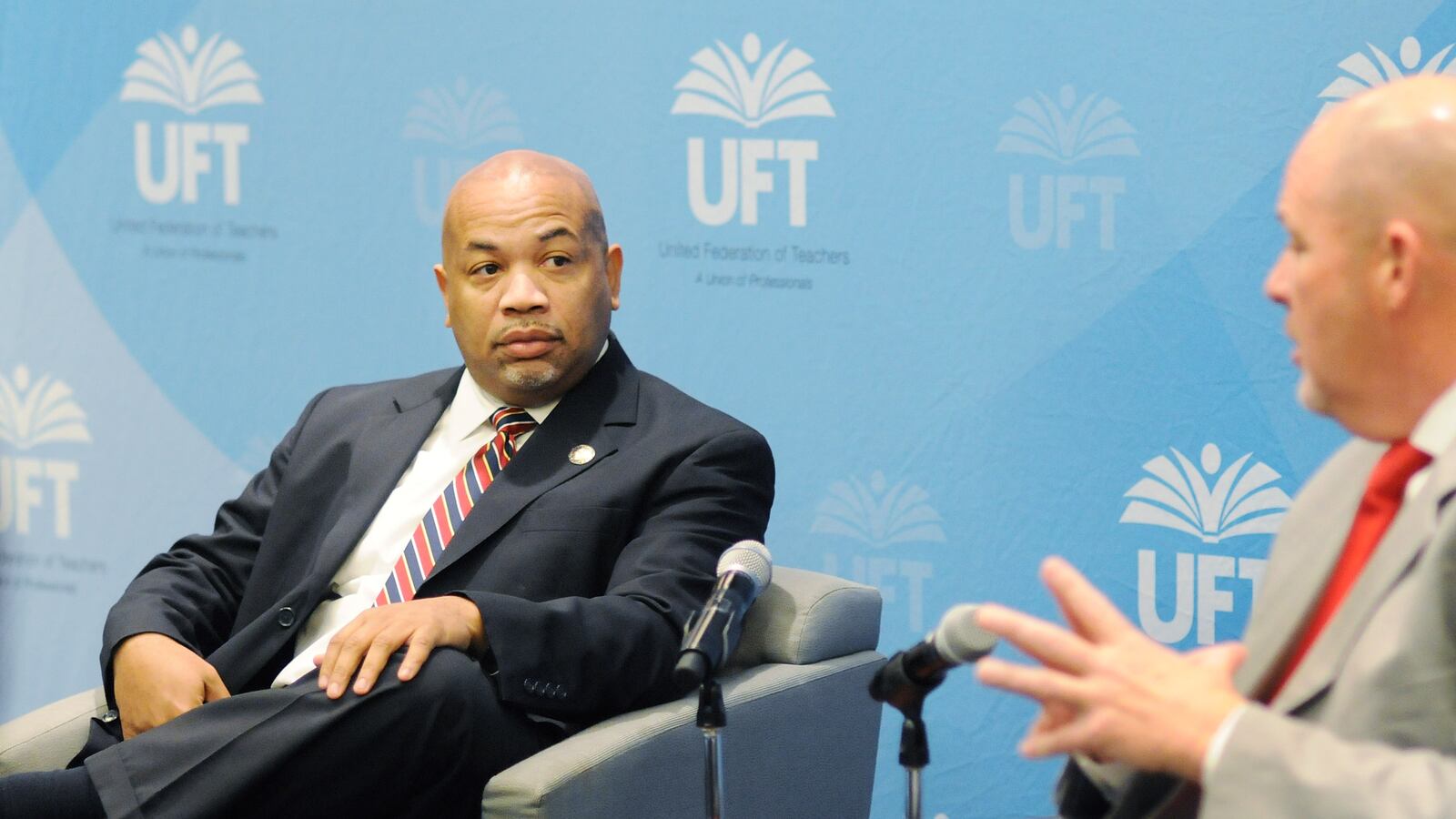New York City teachers who are happy with how they’ve been evaluated for the past couple years should be thrilled about a new teacher evaluation bill that passed in the Assembly on Wednesday.
The bill would untie teacher evaluations from state test scores, eliminating the possibility that a law requiring test scores to count for up to half of educators’ ratings could ever be put into action. Now that the bill has passed in the Assembly, it must also clear the Republican-led Senate to become law, whose decision on the bill will likely come down to the wire.
If enacted, the bill might not have a major effect on the lives of more than 70,000 New York City teachers. That’s because the use of grades 3-8 math and English test scores has already been paused since 2015. In that time, the city created a new teacher evaluation system that uses local assessments to gauge student progress — and union officials say that it likely will remain in place for the time being.
“Nothing will change for New York City teachers,” UFT President Michael Mulgrew said, “except that the threat was hanging over us … is not there if we get this law passed.”
Here’s what New York City educators need to know about the new teacher evaluation bill:
How are teachers evaluated now?
Since 2010, teachers are evaluated based on a combination of student academic improvement and principal observation. (Using test scores in teacher evaluations was a radical change from a previous system where teachers were rated either “satisfactory” or “unsatisfactory” and principals had latitude to determine how those ratings were assigned.)
Though state law technically requires districts to use test scores in teacher evaluations, the Board of Regents placed a moratorium on the use of grades 3-8 math and English tests shortly after the most recent version of the law was passed.
In place of test scores, New York City teachers are evaluated based on “Measures of Student Learning” or city-created exams that test students on everything from English to art. Each school picks from a list of local tests, and teachers are rated based on the progress students make on the tests.
Teachers are also observed by their principals, who give them a rating based on their classroom practice, preparation, and professionalism in the school. A teacher’s score on academic growth and their principal’s observations are combined to produce one of four overall ratings spanning from “ineffective” to “highly effective.”
What will change for New York City teachers under the bill?
Mulgrew is right: not very much.
The bill precludes the state from requiring districts to use state test scores in teacher evaluations. It also says the assessments must be negotiated by local districts and approved by the New York’s commissioner of education.
That’s already happening in New York City, where grade 3-8 math and English state tests have not been allowed in teacher evaluations since 2015. Additionally, the union was part of negotiations for the city’s new evaluation plan the following year, and state officials have already approved the tests the city uses.
The bill allows districts to keep their current system until there’s a chance to collectively bargain. But assuming that happens at some point in the future, the tests the city uses could change. City officials can always add, alter, or subtract from the list of assessments they use. Mulgrew said the union would likely work with the city to create new testing options. Also, if the bill passes, districts could choose to use state tests in teacher evaluations if their local unions agree.
The law change is important mainly because it would eliminate the chance that the system Gov. Andrew Cuomo pushed three years ago would take hold in New York. That fact has been far from assured for the past several years since the law remains on the books.
What about everything other than tests? Is that changing under this bill?
Nope.
The requirements for teacher observations remain the same. Technically, this includes a controversial requirement that teachers are evaluated by independent observers. However, the state education department has created a waiver so that cities, including New York City, haven’t had to comply with this requirement.
The ratings, spanning from “ineffective” to “highly effective,” would still be used to judge teachers. Also, the consequences for teachers if they score poorly on the evaluations would remain the same. For instance, three “ineffective” ratings can trigger a teacher’s firing and the evaluations must be a factor in teacher tenure.
However, under the current framework used last year, nearly 97 percent of teachers were rated either “highly effective” or “effective.” Less than one percent of teachers were rated ineffective, leaving little room for serious consequences.
What are the potential benefits and problems with the plan?
Union officials argue this will be a more fair system for educators that does not include a state-mandated test to determine an educator’s fate. These tests are an unreliable way to measure a teacher’s success, Mulgrew said.
“Anyone who designs standardized tests keeps saying the same thing,” Mulgrew said, “these are not designed as any sort of accountability measures.”
There are still many unresolved issues, such as the problem that teachers could still be rated based on subjects that they don’t teach. If schools do not have a physical education tests, for instance, those teachers could be rated based on a test in a different subject. Even with the moratorium placed on the use of certain state tests in teacher evaluations, more than half of teachers were rated based on subjects they don’t teach, according to numbers obtained by Chalkbeat.
Other critics say that not requiring state test scores in teacher evaluations may eliminate a reliable metric to track whether teachers are helping students learn.

